Science
News

16 Feb 2007
Next week, some of Australia’s and the world’s foremost experts in the field of rust diseases will be in Sydney to attend a symposium on the topic – “Rust Diseases: Threats to Global Food Security in the Context of Climate Change.”

15 Feb 2007
Nature Publishing Group (NPG) and AstraZeneca are delighted to announce the launch of Nature China (www.naturechina.com), a new web based publication promoting the best scientific research published in mainland China and Hong Kong.

14 Feb 2007
Summaries of newsworthy papers include Astronomy: Forming the darkest galaxies in the Universe, Evolutionary psychology: Family ties, Particle acceleration: Wave up and Ecology: Conservation strategy rethink

13 Feb 2007
TWAS – the academy of sciences for the developing world – has entered into new agreements with two organizations in Pakistan and one in India to expand its South-South fellowships programme – the largest of its kind on the world.

12 Feb 2007
The Nano Science Technology Research Center was selected as an Open Research Center Project of the Ministry of Education, Culture, Sport, Science, and Technology in 2002. Since then, it has been engaged in pioneering nanoscience and technology projects.
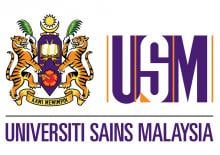
12 Feb 2007
Papermaking in Malaysia is essentially based on recycled fibers. One of the major issues faced by mills using recycled fibers is the diminishing strength of papers with recycling. Palmcel introduces a new class of biodegradable chemicals derived from oil palm residues which can augment both the dry and wet strength of papers.

11 Feb 2007
In utero protein regulation, Common genetic variant protects against breast cancer, Large-scale survey of mutations in cancer, Sleep deprivation impairs subsequent learning, Human adult stem cells can regenerate muscle, Viral highways: spreading from cell to cell, Finding phosphates on proteins

07 Feb 2007
Quantum optics: A trick of the light, Neuroscience: New target for Parkinson's disease, Climate change: Reviewing strategies, Immunology: Receptor for New World haemorrhagic fever viruses found, Palaeoclimate: Global continental cooling, Genetics: ‘Out of Africa’ with Helicobacter pylori, Seal of approval
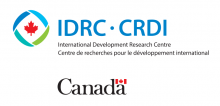
06 Feb 2007
IDRC Visiting Executive, Howard Alper, has been named cochair of the InterAcademy Panel (IAP) on International Issues. The network of science academies from 90 countries offers advice to governments on international science-based issues.

05 Feb 2007
Fifteen MacmillanScience titles are now available as e-books to browse and buy from February 2007 at www.macmillansciencebookstore.com.

05 Feb 2007
Oysters treated with high pressure water look and taste better, according to consumers who participated in a NSW Department of Primary Industries (DPI) research project.

05 Feb 2007
NSW Department of Primary Industries (DPI) scientists have identified a major new source of wheat germplasm tolerant of aluminium toxicity, paving the way for the breeding of new bread wheat varieties able to grow in acid soils.

05 Feb 2007
A ‘dig’ at a former rubbish tip in Sydney is providing scientists with the clues needed to determine the level of greenhouse emissions from wood products in landfills.

04 Feb 2007
The International Center for Agricultural Research in the Dry Areas (ICARDA) is an international research center with staff from 45 countries. We have an opening for Head of Program Facilitation Unit, CGIAR Program for Central Asia and the Caucasus; and Regional Coordinator of ICARDA-CAC Program, based in Tashkent, Uzbekistan.

04 Feb 2007
The International Center for Agricultural Research in the Dry Areas (ICARDA) is a non-profit international research center with staff from 45 countries. We have an opening for a Barley Breeder, to be based at the headquarters in Aleppo, Syria

04 Feb 2007
Summaries of newsworthy papers from Nature journals include Annotating the human genome, Learning to keep newborn neurons, Release requirements and A tool to delete DNA

02 Feb 2007
The development of a population of ‘regulatory’ immune cells is more complicated than originally thought, according to a paper to be published online this week in Nature Immunology.

31 Jan 2007
Summaries of other newsworthy stories include Ecology: Bacteria get into films and Thermodynamics: Maxwell's demon reincarnated?

31 Jan 2007
Leading weapons experts and security think-tanks have accused the British government of withholding information needed to properly evaluate a multibillion-pound proposal to renew the country's fleet of nuclear submarines, Nature reports this week.
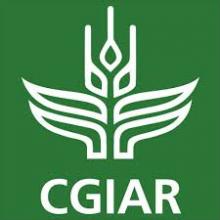
31 Jan 2007
As the world marks this year's World Wetlands Day on February 2, the Director General of WorldFish Center, based in Penang, and the Executive Director of the UN Environment Programme jointly write a piece to create awareness on the plight of wetland fisheries worldwide, as well as mobilize appropriate action.

31 Jan 2007
The technologies include a novel oral drug delivery system, infrared tomography for solid floe monitoring, textile thermal tester machine, roselle chewable tablets, new technique for transdermal drug delivery system and many more. The Seoul International Invention Fair is the largest Bi-Annual Invention Fair in Asia.
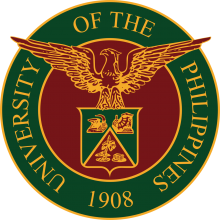
29 Jan 2007
The latest issue of Science Diliman, Volume 18, Number 1 (January-June 2006), is now available.

28 Jan 2007
Summaries of newsworthy papers include Not losing sleep over the orexins, Potential new therapeutic target in breast cancer, The molecules behind Angelman syndrome, Sun worshipers, A mouse shows us how the brain works

26 Jan 2007
An unusual case of a young girl with a colon cancer syndrome caused by recessive mutations in the mismatch repair gene MSH6 is described. Individuals with mutations in MSH6 are at an increased risk of developing cancer; however, a childhood cancer syndrome caused by these mutations has only recently been recognized.

26 Jan 2007
University research activities have always been an important factor in societal progress. Thus, it is important for universities to communicate their research to the public. Keio’s Annual Report on Research Activities provides the community with information regarding our strategies and direction, as well as our current research activities.
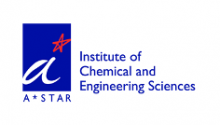
25 Jan 2007
A research collaboration agreement between the Institute of Chemical and Engineering Sciences and National Instruments Singapore Pte Ltd. to study Integrative Process Analytical Technologies (iPAT).

25 Jan 2007
A globally rare Y chromosome type described previously in only a few West African individuals has been found in a British male, according to a study to be published online this week in the European Journal of Human Genetics. This finding represents the first genetic evidence of an African genealogy among ‘indigenous’ British people.

25 Jan 2007
Summaries of newsworthy papers from Nature include Cancer cleared by p53 restoration, Algorithm seeks out smell, Essays: Putting the pieces together, Quantum physics: To bunch or not to bunch and Fight-watching fish fathom hierarchies

24 Jan 2007
IBN’s technology spells hope for cancer patients who suffer from painful side-effects of chemotherapy

24 Jan 2007
IBN has pioneered methods to enable these nanocrystals to be used as powerful tools in bio-imaging and drug targeting
Giants in history
Chinese biochemist Chi Che Wang (1894 - 1979), one of the first Chinese women to study abroad, advanced to prominent research positions at American institutions including the University of Chicago and the Northwestern University Medical School.
Ruby Sakae Hirose (1904 – 1960) was a Japanese-American scientist whose research contributed significantly to our understanding of blood clotting, allergies and cancer.
Chinese electron microscopy specialist Li Fanghua (6 January 1932 – 24 January 2020) facilitated the high-resolution imaging of crystal structures by eliminating interference.
Sálim Moizuddin Abdul Ali (12 November 1896 – 20 June 1987), commonly referred to as the Birdman of India, was the first person to conduct systematic surveys of birds from across India.
Haisako Koyama (1916 – 1997) was a Japanese solar observer whose dedication to recording sunspots – cooler parts of the sun’s surface that appear dark – produced a sunspot record of historic importance.
Michiaki Takahashi (17 February 1928 – 16 December 2013) was a Japanese virologist who developed the first chickenpox vaccine.
Toshiko Yuasa (11 December 1909 – 1 February 1980) was the first Japanese female physicist whose research on radioactivity shed light on beta decay – the process in which an atom emits a beta particle (electron) and turns into a different element.
Angelita Castro Kelly (1942-2015) was the first female Mission Operations Manager (MOM) of NASA. She spearheaded and supervised the Earth Observing System missions during its developmental stage.
Malaysia’s first astrophysicist, Mazlan binti Othman (born 11 December 1951) was instrumental in launching the country’s first microsatellite, and in sending Malaysia’s first astronaut, Sheikh Muszaphar Shukor, into space.
Known as Mr. Natural Rubber, chemist and researcher B. C. Shekhar (17 November 1929 – 6 September 2006) introduced a number of technical innovations that helped put Malaysia’s natural rubber industry on the world map.
Shinichiro Tomonaga (31 March 1906 – 8 July 1979), together with Richard Feynman and Julian Schwinger, was awarded the Nobel Prize in Physics in 1965, for their contributions to advance the field of quantum electrodynamics. Tomonaga was also a strong proponent of peace, who actively campaigned against the proliferation of nuclear weapons and promoted the peaceful use of nuclear energy.
South Korean theoretical physicist Daniel Chonghan Hong (3 March 1956 – 6 July 2002) achieved fame in the public sphere through his research into the physics of popcorn.
Japanese chemist Kenichi Fukui (4 October 1918 – 9 January 1998) was the first Asian scientist to be awarded the Nobel Prize in Chemistry. Together with Roald Hoffman, he received this honour in 1981 for his independent research into the mechanisms of chemical reactions.
Chinese palaeontologist, archaeologist and anthropologist Pei Wenzhong (January 19, 1904 – September 18, 1982) is regarded as a founder of Chinese anthropology.
Physicist Narinder Singh Kapany (31 October 1926 – 4 December 2020) pioneered the use of optical fibres to transmit images, and founded several optical technology companies. Born in Punjab, India, he worked at a local optical instruments factory before moving to London for PhD studies at Imperial College. There, he devised a flexible fibrescope to convey images along bundles of glass fibres.
Japanese physicist Ukichiro Nakaya (1900-1962) made the world’s first artificial snowflakes. He started his research on snow crystals in the early 1930s at Hokkaido University, where there is an unlimited supply of natural snow in winter. By taking over 3,000 photographs, he established a classification of natural snow crystals and described their relationship with weather conditions.
The field of solid-state ionics originated in Europe, but Takehiko Takahashi of Nagoya University in Japan was the first to coin the term ‘solid ionics’ in 1967. ‘Solid-state ionics’ first appeared in 1971 in another of his papers, and was likely a play on ‘solid-state electronics’, another rapidly growing field at the time.
Charles Kuen Kao (Nov. 4, 1933 to Sept. 23, 2018) was an engineer who is regarded as the father of fibre optics. His work in the 1960s on long distance signal transmission using very pure glass fibres revolutionized telecommunications, enabling innovations such as the Internet.
Chika Kuroda (24 March 1884 – 8 November 1968) was a Japanese chemist whose research focussed on the structures of natural pigments.
Motoo Kimura (13 November 1924 – 13 November 1994) was a Japanese theoretical population geneticist who is best remembered for developing the neutral theory of molecular evolution.
Meghnad Saha (6 October 1893 – 16 February 1956) was an Indian astrophysicist best known for formulating the Saha ionization equation which describes the chemical and physical properties of stars.
Sir Jagadish Chandra Bose (30 November 1858 – 23 November 1937) was a scientist and inventor who contributed to a wide range of scientific fields such as physics, botany and biology.
Osamu Shimomura (27 August 1928 – 19 October 2018) was a Japanese organic chemist and marine biologist who dedicated his career to understanding how organisms emitted light.
Subrahmanyan Chandrasekhar (19 October 1910 – 21 August 1995) was an Indian astrophysicist who studied the structure and evolution of stars.
Joo-myung Seok (November 13, 1908 – October 6, 1950) was a Korean butterfly entomologist who made important contributions to the taxonomy of the native butterfly species in Korea.
Mathematician Maryam Mirzakhani (12 May 1977 – 14 July 2017) was the first and only woman and Iranian to date to win the Fields Medal in 2014 for her work on curved surfaces.
Sir Chandrasekhara Venkata Raman (7 November 1888 – 21 November 1970) was an Indian physicist who performed ground-breaking research in the field of light-scattering.
Mohammad Abdus Salam (29 January 1926 – 21 November 1996) was a theoretical physicist and the first Pakistani to receive a Nobel Prize in science.
Srinivasa Ramanujan (22 December 1887 – 26 April 1920) was a math prodigy and widely considered one of India’s greatest mathematicians. Despite having almost no formal training in mathematics, he made substantial contributions to mathematical analysis, number theory, infinite series and continued fractions.
Gopalasamudram Narayanan Ramachandran (8 October 1922 – 7 April 2001) is best known for developing the Ramachandran plot to understand the structure of short chains of amino acids, known as peptides.
Hitoshi Kihara (1893 – 1986) was one of the most famous Japanese geneticists of the 20th century. One of his most significant contributions was identifying sex chromosomes (X and Y) in flowering plants.
Chien-Shiung Wu (31 May 1912 – 16 February 1997) was an experimental physicist who made several important contributions to nuclear physics. Wu worked on the Manhattan Project – a top-secret program for the production of nuclear weapons during World War II and helped to develop a process for separating uranium into U235 and U238.
Meemann Chang (born 17 April 1936) is a Chinese palaeontologist who studied the fossils of ancient fish to understand the evolution of life. By examining fossils, she uncovered new insights on how vertebrates, animals with a backbone, migrated from the sea and became adapted to live on land.
Bibha Chowdhuri (1913 – 2 June 1991) was an Indian physicist who researched on particle physics and cosmic rays. In 1936, she was the only female to complete a M.Sc. degree at the University of Calcutta.
Lin Lanying (7 February 1918 – 4 March 2003) was a Chinese material engineer remembered for her contributions to the field of semiconductor and aerospace materials. Lanying was born into a family who did not believe in educating girls and she was not allowed to go to school.
Japanese geochemist Katsuko Saruhashi developed the first method and tools for measuring carbon dioxide in seawater





































